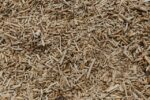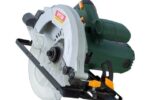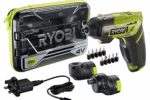The Top 5 Best Saw Blades for Cutting Metal
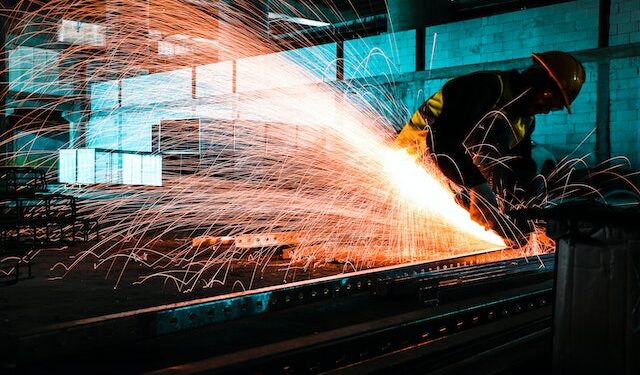
If you work with metal in your woodworking projects, you know the importance of having the right saw blade for the job. A good quality saw blade will not only make your work easier but also ensure clean and precise cuts.
With so many options on the market, it can be overwhelming to choose the right one. In this article, we will take a closer look at the top 5 best saw blades for cutting metal, including their features and benefits, so you can make an informed decision and take your metalworking projects to the next level.
Circular Blades
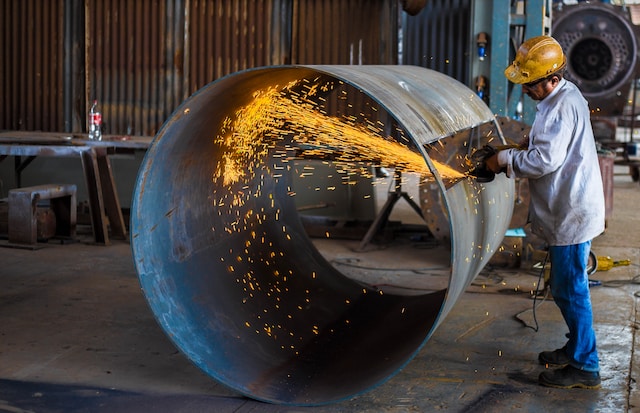
If you’re looking for the best saw blade for cutting through the toughest metals, then a circular blade should definitely be your go-to. But before you get ahead of yourself let’s delve a little deeper into the specifics.
When it comes to circular saw blades there are several different types available. For example you can get Carbide Tipped blades, HSS blades and HSS Strip blades. Carbide Tipped blades have carbide tips that are brazed onto a softer steel body, meaning they are incredibly durable and great for cutting on tough materials such as metals. HSS blades, on the other hand, are made from quality high speed steel, making them the ideal choice for precision cuts. Finally, HSS strip blades feature teeth that are cut from the body of the blade, making them very strong and ideal for heavier duty jobs.
When it comes to features circular blades are usually specified by two main characteristics – diameter and bore. The diameter determines how much material can be cut and the bore determines how thick the material can be. Depending on the type of blade, the bore can also determine what type of saw it is suitable for. For example HSS blades are generally used in circular saws whilst Carbide Tipped blades are generally used in chop saws.
As for the best uses for circular blades, they are generally used for rough cutting through tough materials such as metals, brick, concrete and stone. They are also great for cutting sheet materials such as sheet metal or sheet wood. Finally, they are excellent for precision cuts, making them ideal for general woodworking as well as light-duty applications.
So whether you’re a professional tradesman or a DIY enthusiast, a circular saw blade can be a great addition to your tool kit. Just make sure you select the right type for the job and you can’t go wrong.
Jig Blades
Ah ha ha ha – so, jig saw blades, huh? Now THESE are special! The most versatile of all saw blades, jig saw blades come in a variety of shapes, sizes, and tooth styles, making them the perfect tool for a wide range of cutting applications. No matter what shape you need to cut, there’s a jig saw blade to do the job!
Let’s start by breaking down the different types of jig saw blades. Straight blades are good for straight and curved cuts in thin materials like sheetrock, plastic, and plywood. Downward-facing blades are specifically designed for cutting materials with shiny surfaces like aluminum. Nail-embedded blades are for, you guessed it, cutting through material with nails or screws. And, specialized blades are curved, angled, or have more aggressive teeth for more intricate tasks.
In terms of features, jig saw blades have variable cutting angles, up to 45 degrees in most cases. This enables them to make bevel cuts and achieve different shapes. They also have variable tooth designs, with spaced teeth for faster, rougher cuts or more tightly packed teeth for smoother, slower cuts. And their size varies, with small blades that can fit into tight spaces and larger blades that can cover more area.
As far as best uses go, jig saw blades are essential tools when it comes to cutting thin materials. Whether you need to make straight cuts or carve out intricate shapes, jig saw blades have got you covered. They’re especially useful for artistic or decorative projects, as the variety of shapes and sizes allows for greater creative freedom.
So there you have it, folks – jig saw blades are the most versatile of all saw blade options and the perfect tool for a wide range of cutting needs! Who says sawing has to be a dull task? With jig saw blades, you can turn your next cutting project into a masterpiece!
Bandsaw Blades

Well hey there, today we’re talkin’ bandsaw blades. Not sure what kind of work you’re doing, but metal needs different blades than, say, cutting through wood. Bandsaw blades are great when metal is your main material and you wannaa clean cut without a lot of effort.
First up, let’s talk about the types of bandsaw blades. You got standard blade shape, then you got tall skinny ones, called “hook-style” blades. Those these are good for getting close to the metal’s edge for those cutesy, angled cuts. Whatever cut you gotta make, there’s probably a type of bandsaw blade to help you do it.
Now, you must know what kind of features to look for in your bandsaw blades. Blades come sharp or dull so you can choose whatever works for your job. Some blades have multiple teeth for better cutting, and some even have coating for better heat resistance and a longer lifespan. You might also see something called a “skip-tooth” blade which is great for getting through dense metal. Make sure you got all the matchy-matchy info to make sure you get what you need.
Now, let’s talk about the best uses for bandsaw blades. It’s a no brainer they be great for most metallic materials like steel, aluminum, and copper. They’ll be great if you need a quick cut and you don’t want to heat the metal up. Most bandsawing is a cutting technique you can include in your metalworking project.
All in all, bandsaw blades are a great option for your metal cutting needs. Weigh the features against the cost and you’ll be slicin’ and dicin’ in no time.
Hacksaw Blades
Hey guys, let’s talk about hacksaw blades. If you need to make straight cuts in metal, you might be looking for a hacksaw blade. Now picture an old-school gumshoe, you know the ones in the movies? Well, they usually carry a trusty old hacksaw blade. That’s right – it isn’t just for busting locks!
So what kinds of hacksaw blades are out there? Well, for starters, there’s a regular blade, which is used for cutting general steel and other metals. There are also bi-metal blades, which are said to be better suited for cutting pipes. The bimetal blades last longer because of its combination of high-carbon steel and high-speed steel construction.
But wait there’s more, there are also carbide-tipped blades that are made to be extra hard and strong. They can withstand really high temperatures, and make cutting tough stuff like stainless steel or cast iron a lot easier.
Now what about features? Well, hacksaw blades come in various sizes and lengths, so you can choose the one that’s best for you. There are also adjustable blades, so you can change the length of the blade on the fly. You should also be aware of the number of teeth per inch. The more teeth per inch the blade has, the smoother the cut will be.
Now, what are some of the best uses for hacksaw blades? As I mentioned before, they are great for making straight cuts in metal. Other applications might include cutting bolts in tight spots, cutting rods, and other steel hardware items. They are also great for cutting plastics, and for use in sheet metal fabrication.
So there you have it – hacksaw blades are one of the top 5 best saw blades for cutting metal. Now you know how to combine a gumshoe with your latest project, just don’t forget to wear your safety glasses!
Reciprocating Blades
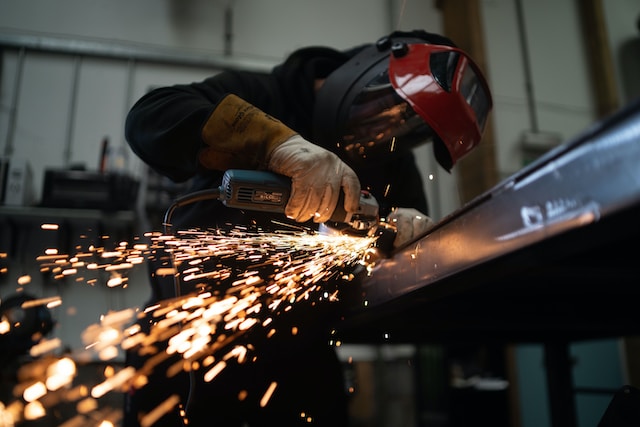
Ah ha ha! You wouldn’t believe how many places we’ve looked to find the best saw blades for cutting metal. We looked everywhere from eBay to Etsy, and everything in between. But at last, we’ve finally landed on our top 5 best saw blades for cutting metal. At numero uno, we’ve got reciprocating blades!
Reciprocating blades are some of the most durable and reliable blades for cutting through metal. They’re typically made with a mixture of tungsten carbide and steel, so they have a high durability and can withstand a lot of strain during the cutting process. And with their slim profile and shallow depth, they allow for a precise, smooth cut.
When it comes to types of reciprocating blades, there are several options to choose from. There are standard reciprocating blades which are designed to be used in a standard saw. Then there are panel blades which are designed to be used in larger saws like panel saws. And finally, there are X-frame blades which are designed to be used in abrasive-cut saws.
When it comes to features, reciprocating blades usually come with a number of useful features. For example, they often come with a threaded shank design, which allows them to be easily attached to the saw. They also come with a large number of cutting teeth, which helps to increase the speed and accuracy of the cut. And finally, they often come with a beveled edge, which helps reduce the amount of force needed to cut through the material.
Finally, when it comes to the best uses for reciprocating blades, these blades are ideal for cutting through hard, thick, and high-grade metals. They’re also great for cutting through softer metals like aluminum and copper, as well as plastics and wood. So if you’re in need of a reliable blade for cutting metal, then a reciprocating blade is definitely a great choice.
Types
Hey, y’all! Today I’m gonna talk to you about types of saw blades for metal! Now, no matter what your project is, there’s a saw blade out there that’ll make the job a whole lot easier – but first, you gotta make sure you’re picking the right type of blade.
Let’s start with circular saw blades. Now, for cutting metal, you should go with a standard blade – with a tooth count of 60 to 80 – rather than a combination blade. Combination blades can work, but they’re better for soft materials. Combination blades also tend to vibrate more when cutting metal, so be careful.
Next up is jigsaw blades. Now, when it comes to metal, you’ve got a few choices. You can go with a metal-cutting blade – either with a standard tooth count or a variable tooth count – depending on the material you’re cutting. Don’t forget, though, that metal blades are super rigid, so you’ll need a heavy-duty jigsaw to handle them.
Bandsaw blades are another great option for metal cutting. For metal, you’re usually better off with an urethane blade, since they’re more rigid and last longer than regular steel blades. Just make sure that the blade you get can handle the thickness of the metal you’re trying to cut.
Hacksaw blades are another one that’s great for metal cutting, and they come in a few different varieties. You can go with a regular hacksaw blade, which is generally 32 to 64 teeth per inch and works best for thin materials. Then there’s a taper-ground blade, which works better for thicker materials, and has 14 to 28 teeth per inch.
Last, but not least, there’s the reciprocating saw blade. This blade’s got teeth running at an angle and is ideal for making curves or getting into tight spaces. They come in a variety of tooth counts and lengths, so you’ve gotta find the right one for your project.
So there ya have it: the different types of saw blades for metal. Now that you know the scoop, it’s time to pick the perfect blade for your next project! Good luck, and happy sawing!
Features
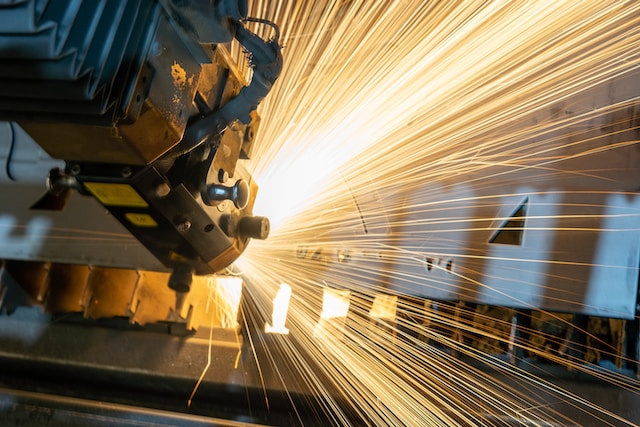
Hey there folks! Let’s talk about features – I’m just gonna break down what features you need to look for when selecting the best saw blade for metal cutting.
Circular Blades – Look for blades made from high-grade carbon steel for these blades, with a hardness rating from 56 to 62 RC. You also want them to have the appropriate teeth per inch (TPI), so that you get the best results for whatever type of metal you’re cutting.
Jig Blades – When shopping for jig blades, you’ll want to look for tempered cobalt steel and carbide-studded blades. Carbide is the latest and greatest in jig blade technology. Not only is it stronger and more durable than other blades, it can also maintain its edge longer than typical steel blades.
Bandsaw Blades – Band saw blades typically have teeth set on a curved blade body. When selecting these blades, you’ll want to look for ones made from hardened steel or specifically heat-treated steel. You also want to look for a specific number of teeth per inch (TPI) so that you can get the best possible results.
Hacksaw Blades – Most hacksaw blades are made from high-grade steel. Bigger blades require fewer teeth per inch (TPI) than smaller blades. It’s important to choose the appropriate size blade for the job.
Reciprocating Blades – For reciprocating blades, you’ll want blades made from high-grade steel with a special coating that prevents heat buildup, as well as a specific number of teeth per inch (TPI). These blades cut through tough metal fast and efficiently.
So there you have it. Get the features right and you’ll get the best metal cutting saw blade for the job. Hopefully you found all this information useful!
Best Uses
Ahhh, now we’re getting to the real meat. The best uses for these saw blades can be summed up in a few words; wood, plastic, or metal! Each of the saw blades we talked about does an awesome job no matter what – but with different uses in mind! Let’s dive into it:
Circular Blades. These have a special purpose – if you’re looking to cut something big and thick, these should be your go-to. Best uses are sophisticated compound curves, straight cuts through thick aluminum, and deep angle cuts. Basically, if you need an arc – you’ll need a circular blade!
Jig Blades. These have a large range of uses, and you’ll be able to use them with greater ease than some of the other blades. They work best with more intricate cuts – such as long, straight cuts, groves, and curved cuts. If you’re not sure what direction your project is taking – jig blades are a great choice.
Bandsaw Blades. These blades can do almost anything! Not only do they cut straight, there are also options that allow for curved or beveled cuts. Even if you’re cutting something extremely intricate or detailed – bandsaw blades can get the job done.
Hacksaw Blades are the ultimate “jack of all trades”. It’s made to do pretty much anything. You can use it for a variety of projects – from simple cuts to more intricate, curved shapes. It’s a great “all rounder”, and it can work with multiple types of materials – including metal, plastic, and wood.
Reciprocating Blades. These are the perfect choice for cutting with extreme precision. They’re designed for smaller, more detailed cuts – like bevel cuts or miter cuts. You’ll be able to create intricate shapes with ease, and the long blades can easily cut through thicker pieces of metal.
There ya have it – the best uses for each type of saw blade. So get out there an choose the right saw blade for your project, and watch your metal-cutting dreams come true!

